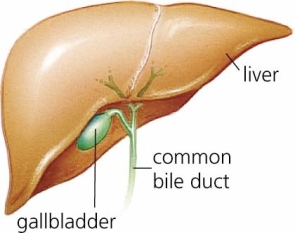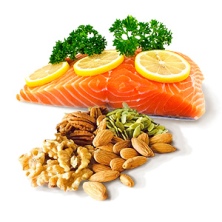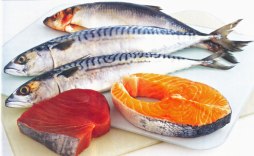The gallbladder stores bile. (The liver makes bile and the gallbladder stores it.) When you eat, hormones are triggered that cause the gallbladder to release its store of bile into the digestive tract. The bile emulsifies the fat in your food. It breaks fat down into tiny pieces that have a large surface area, so that the digestive enzymes can work on it more efficiently. If you’ve had your gallbladder removed, there’s nowhere to store the bile and it drips continuously into the small intestine. That means that it’s there when you don’t need it and there isn’t enough when you do. Then, fat doesn’t get broken down into tiny pieces so the digestive enzymes can’t work on it very easily. It remains as lumps in your gut, causing constipation, nausea, vomiting, abdominal pain, indigestion, gas, bloating and belching. You can get the same symptoms if your gallbladder is sluggish.
However, you still need to eat important fats, even if you have no gallbladder. Essential fatty acids can’t be made in the body and without them we become depressed, dry, confused and hormonally unbalanced.
If your gallbladder has been removed or is sluggish, there are two points to consider:
– what fats should you eat?
– how can you eat them without feeling ill?
What fats?
There are 3 main essential fatty acids: omegas 3,6 and 9. Omega 9 is in olive oil, and the little used in cooking and dressings is enough. No need to go overboard with that one. Omega 6 is in seeds, nuts and some vegetables and rarely needs to be supplemented (don’t be fooled by the presence of trendy “balanced oil blends” – the balance between omegas 3 and 6 is important, but since more people are deficient in omega 3 than 6, supplementing both of them at the same time doesn’t fix the imbalance).
Omega 3 is the biggest challenge and is also the most significantly lacking, compromising our health. It’s found most easily in oily fish, seaweed, flaxseed, pumpkin seeds and walnuts. Vegetarians and vegans have a hard time because you just can’t get enough essential fatty acids for health without drinking a bottle of flaxseed oil a day (and apart from tasting disgusting, that’s no good if you have a gallbladder problem). Oily fish and seaweed have more accessible essential fatty acids per ounce (usually greater than 100x more), but while oily fish can be incorporated easily into our meals, seaweed can’t be eaten in great enough quantities without supplementing or having a really, really boring diet.
You should be aiming to eat oily fish (or seaweed) 5 times a week. To some people, that sounds like a lot, but that’s often because they’re thinking only of their evening meals. Actually, you have 21 main meals to play with. How about having kippers for breakfast at the weekend or throwing anchovies into a salad at lunchtime? Smoked salmon and mackerel also provide an easy source of omega 3 oils. For dinner, there are loads of choices of oily fish. Grill some salmon with lemon and pepper, add some fresh tuna to a risotto or put herring in a fish pie. There’s an easy acronym to help remember the more popular oily fish: SMASHT (Salmon, Mackerel, Anchovies, Sardines, Herring, Tuna). Just make sure the tuna is fresh steak, rather than tinned; when suppliers make supplements, they have to get the fish oil from somewhere and the somewhere they get it from is the tuna that’s about to be tinned. That’s why it tastes so dry and so very different from fresh tuna.
How to eat fats
That addresses the type of fat to eat, but it doesn’t deal with how to eat it, and if you have a dodgy gallbladder you have a problem digesting it. The best thing to do when you have a sluggish or absent gallbladder is to reduce the amount of fat in the diet, but not eliminate it completely. Go for quality and don’t waste your bile on unessential fats. The best advice is to spread fat consumption out during the day. That way, you’re matching the rate of fat consumption with the rate of bile release. However, while that’s OK for when you have a cup of tea with milk, it’s not practical if you’re eating a fresh tuna steak (which is difficult to spread throughout the day).
Keep fat to a minimum for most of the day, but take an emulsifier when you’re having fat in a meal and there’s a greater quantity of it to digest. At those times, your digestive system needs help with the emulsification. Lecithin is a good option and doesn’t taste too bad. It emulsifies the fat, giving the gallbladder less to do and taking the pressure off. Taking some lecithin before eating a meal containing fat can really make a difference (though there’s a limit to what lecithin can do if the meal consists of deep-fried fish and chips with sticky toffee pudding and ice cream for dessert).
I’m not a big fan of taking supplements because I believe our bodies are clever enough to adapt quickly to changes. However, some people’s bodies just don’t adapt to the removal of the gallbladder quickly enough, and I don’t see why they should suffer unnecessarily. If you’re one of those unlucky people that struggles through food, consider supplementing lecithin when you need it.
You can get lecithin mail-order from the Nutricentre. You get what you pay for, so don’t go for a cheap option. I like Solgar’s lecithin.





